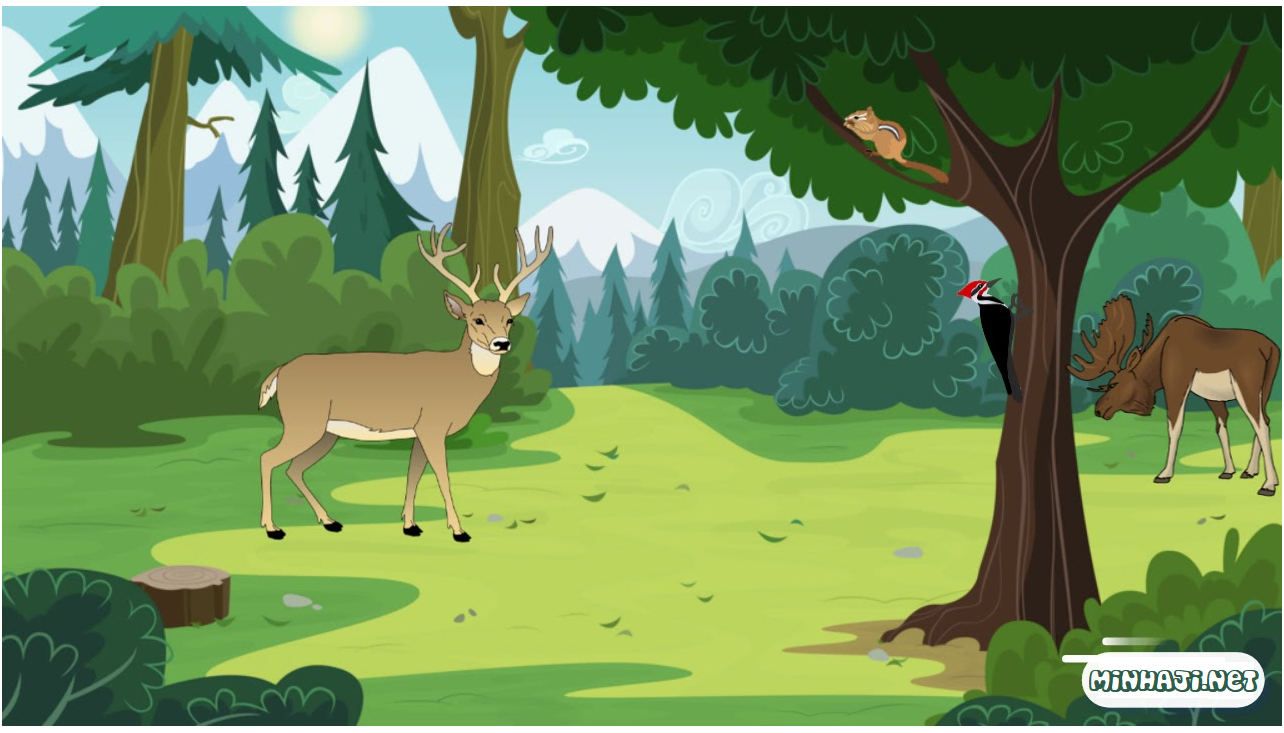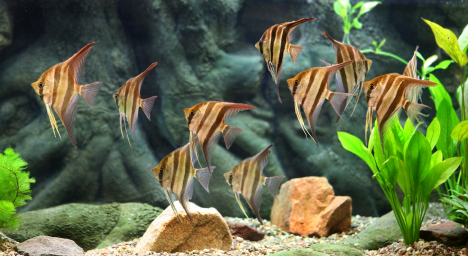Components of the ecosystem
Concept of the ecosystem
Ecosystem: a collection of living and non-living components that exist together in a certain environment, with some components being interconnected.
Each ecosystem has its own components.
Components of the ecosystem
The ecosystem consists of two components:
- Living components.
- Non-living components.
Non-living materials help living organisms to survive.

examples of an ecosystem:
Fish tank:
The fish tank contains:
- living components, such as fish and plants.
- It also contains non-living components, such as water and oxygen dissolved in the water.
Fish and plants need water to live and oxygen to breathe
Fish and plants release carbon dioxide that plants need in the process of photosynthesis.

Forest:
A forest is an ecosystem that includes:
- Living components, such as plants and animals.
- Non-living components such as water, soil, and air.
Ecosystems divided according to size:
- Large ecosystem.
Such as:
• Forest.
• Ocean.
- Small ecosystem.
Such as:
• Fish tank.
• Base of a tree trunk.
• Soil sample.
The concept of Population and Communities.
Population: A group of individuals of the same species, living in the same ecosystem, affected by the same conditions and circumstances, and having the ability to survive.
Examples:
- Sea anemones living in the waters of the Gulf of Aqaba form a biological community in the aquatic ecosystem.
- Camels live in the Jordanian desert in groups.
Size of the population varies from one group to another.
Communities: Different groups of communities that can coexist in the same ecosystem and interact with each other.
Example:
In the Jordanian desert, there are groups of communities such as camels, snakes, and plants, which together form a community in the desert ecosystem.
Biodiversity
The concept of biodiversity
Biodiversity: Different types of organisms that live in an ecosystem.
The importance of biodiversity
Biodiversity is important because organisms depend on each other for food.
Factors on which biodiversity depends
- Natural factors, such as climate.
- The influence of relationships between living organisms.
- Human activities.
- The biological environment, for example, forests are more biodiverse than desert environments.
إعداد : شبكة منهاجي التعليمية
01 / 07 / 2023
النقاشات